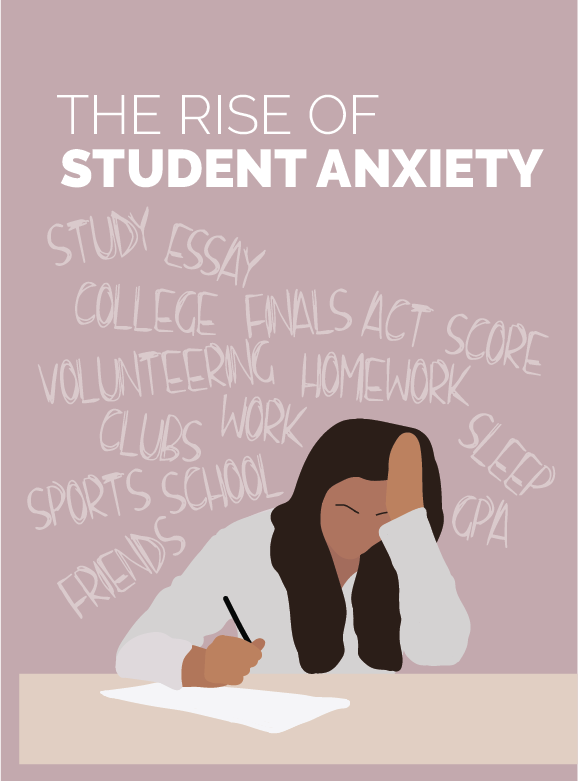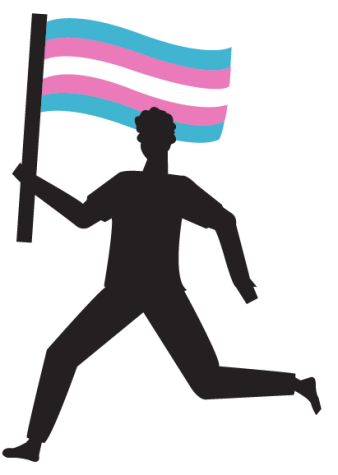The Rise of Student Anxiety
Additional Interviews by: Menaka Garapaty | Staff Writer Eve Loehrer | Staff Writer Abby Shepherd | Lead Editor
It’s the last month of the semester, and finals week is fast approaching. You’re sitting in your last class of the day, and you can feel your breath quickening and chest tightening as the weight of another project adds to the stack of assignments, exams, and presentations.
Anxiety is on the rise in teens, and Olathe North’s student body is no exception. The pressures of balancing academic stress, social lives, and growing up in a digital age are increasingly weighing on students.
In the Fall of 2019, every student in the Olathe School District took Panorama surveys, showing 66% of the Olathe student body did not know how to cope with the anxiety they face. However, at Olathe North, 70% of students said they did not know how to cope with anxiety. So, what causes this anxiety and how does the staff intend to aid students?
Recently, an overwhelming 91.5% of students self-identified their cause of anxiety to be academic stress in a survey was conducted among Olathe North students. Students also identified social stress and drama and the pressure to please parents at 55.1% and 50.8% respectively.
According to Erin Davis, school psychologist at Olathe North, in her encounters with students who express that they are anxious, states that “families expectations and school stress is definitely a factor”. Principal Jason Herman also credits the rising levels of anxiety in students to social media and the smaller world that students live in.
Students are constantly plugged into media, leaving little to no separation between them and their peers. This opens up the door to social anxieties. Senior Hugo Perez expresses this saying his “anxiety is mostly social when [he] is put in difficult social situations”.
Herman recommends that students try to build healthy digital habits by unplugging for a few hours each day. Davis, on the other hand, states that there are many apps that students can use on their phones to promote mindfulness.
To combat the rise of anxiety and stress, Davis aims to equip students with coping skills as they are more “long term” for students to use in more than one situation; she aims “to identify with students what a good coping skill is for them” and build healthy habits to aid them in applying those skills.
Perez combats his anxiety with music, breathing regulation, and being self aware that the thing making him anxious “is not as big as it feels”. Some other coping skills Davis suggests that students try are mindfulness and physical activity.
Along with digital regulation, Herman recommends that students try to be organized. Using planners, calendars, and not procrastinating on school work are all good habits that could help alleviate some academic stress and anxiety. Lastly, Herman recommends that students find a trusted adult to talk to about their struggles.
Every year, Olathe North writes a school improvement plan including goals for literacy, numeracy, ACT, and recently, Behavioral Social Emotional Learning.
Administration looks at testing and Panorama data to address what the student body needs most that year. Last year, the Social Emotional Learning goal was perseverance and grit, as it was lacking the most in Panorama data. According to Robert Cave, a teacher at Olathe North and chair of the Building Leadership Team, this year’s school improvement goal is all about anxiety and lessing anxiety.
This year’s SMART goal is to increase coping with anxiety from 30% to 35% through staff aiding students in SEL growth. Staff members are being equipped to aid students in their Professional Learning Communities (PLCs) and Building Leadership Teams (BLTs).
This past month during PLCs, administration flipped the script and taught teachers some ways to manage their stress and create healthy habits. This creates a foundation of basic skills that teachers may distribute to students as well as a healthy example for students. In these meetings, staff members learn how to identify when students need help and coping skills to offer students.
According to the survey given to the student body, 59.3% of students feel that administration is not doing enough to address anxiety. One student writes that “talking about anxiety more would help reduce the stigma”, which was a common sentiment across the responses.
Another student writes that “talking about how to identify anxiety” would aid in students combatting the anxiety epidemic. A theme expressed in both staff and student responses is that self-awareness in the student body is key. Addressing the issue of anxiety head on and not shying away from difficult conversations enables progress. Students need to find a safe space to share what they’re feeling, and to be given the skills to properly cope with the anxieties they face.
As a whole, Olathe North staff interviewees expressed that no student has to go through anxiety alone. If a student is going through a hard time and doesn’t know how to cope, staff expressed students should seek help from a teacher, parent, friend, or counselor.

Number of years on the paper: This is Bailey's second year on the paper.
Grade Level: 11th, Junior
Favorite part of Newspaper: "work nights and...








